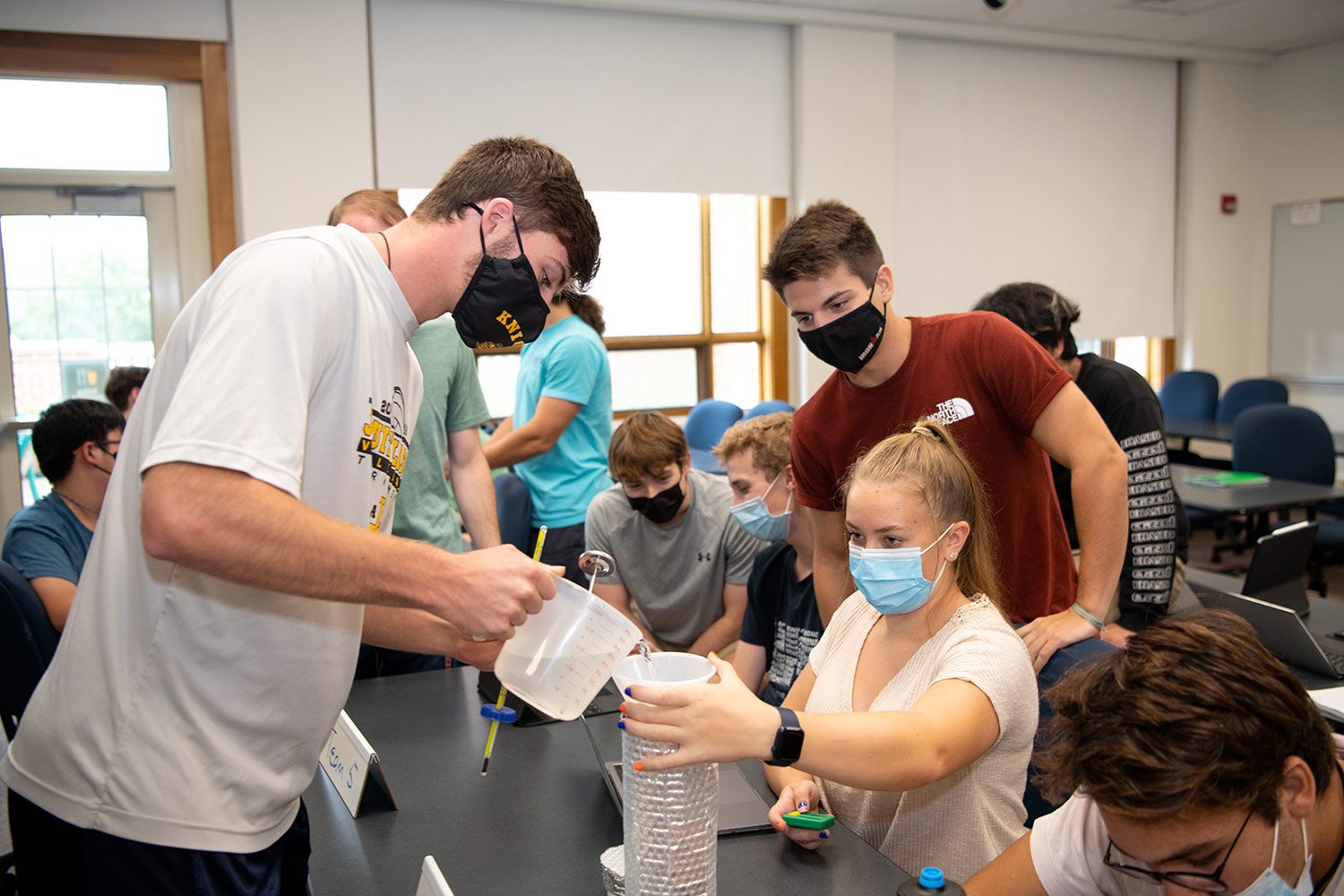

Re-engineering ENGR 100
Intro course aims to better prepare students for a new reality
PAY NO ATTENTION to the job title in the email signature.
Today’s engineers must be multi-talented and able to partner with colleagues on projects that span traditional dividing lines.
At Bucknell, a reimagining of the College of Engineering’s cornerstone course aims to better prepare students for this new reality. ENGR 100 immerses students in hands-on, project-oriented assignments that help them experience multiple engineering disciplines and understand the ways they overlap.
“We are trying to adapt to the changing world,” says Professor Kat Wakabayashi, chemical engineering. “The world is becoming more diverse, more global and more interdisciplinary.”
While most Bucknell courses fall under an individual professor or academic department, ENGR 100 belongs to the entire college and its six departments. Therefore, updating the course required an interdisciplinary approach.
For the revamp, Wakabayashi teamed up with Professor Benjamin Wheatley, mechanical engineering, and Professor Kelly Salyards, civil & environmental engineering.
“We think this is an important time — while they’re undeclared or just walking into a major, perhaps on a whim — to introduce what the other majors do,” Salyards says. “Engineers work with engineers, and it’s important to know where to go when you need help.”
Every semester, about 200 ENGR 100 students are divided into eight sections, each led by an engineering professor. Students within these sections split into small groups and are presented with a problem to solve using engineering.
The projects fall under a central topic, such as the 2021–22 theme of sustainability. Some students designed a solar-powered building, others created a sustainability app, and still others devised a method for on-campus composting.
“We built a prototype and collected measurements of temperature throughout a two-week span,” says Olivia DeConinck ’25, who worked on the composting project. “We calculated, tested and made conclusions. It helped us focus on what really did matter — rather than just abstract thinking.”
While students explore various engineering majors in a meaningful and interactive way, they also learn the engineering design process — a set of steps that will guide their work at Bucknell and far beyond.
“Even after Bucknell and into my career, I can use that same process,” says Chase Derk ’25, a civil engineering major. “I can apply it to anything I do.”